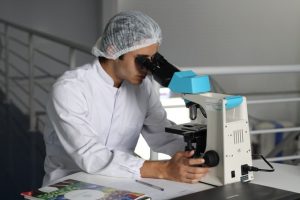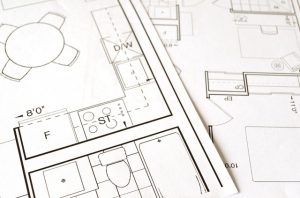 The physical centerpiece of the new Knight Cancer Institute is a seven-story Lab in Portland’s South Waterfront neighborhood. Rising from a brownfield, it appears much like any other 21st-century office building in the midst of construction. But this building differs. And OHSU administrators hope it can assist in their $1 billion effort to heal, or at least better understand, cancer.
The physical centerpiece of the new Knight Cancer Institute is a seven-story Lab in Portland’s South Waterfront neighborhood. Rising from a brownfield, it appears much like any other 21st-century office building in the midst of construction. But this building differs. And OHSU administrators hope it can assist in their $1 billion effort to heal, or at least better understand, cancer.
In a more conventional construction project, the house owner says what he or she desires, such as engineered timber frames and products in the foyer, an architect designs the project, a builder explains why it cannot be achieved and then everyone goes back to the drawing board. Tiffani Howard, a biologist with OHSU, states that the cycle goes on a couple of times, and usually what happens is the owner ends up with something less than they initially thought they were going to get. Or they put up a good deal more cash to get the job done.
Howard has been given the task of telling contractors what scientists in the Knight Cancer Institute do and do not want in their new study home. She is helping lead a different type of process. Since the new institute will be packaged with labs, computers and other high-tech facilities, the architects brought in most of the electricians, emergency plumbers, contractors and technicians in on the first computer design procedure. Even the man who would eventually hang the drywall was involved in early discussions.
He can sit near the architect and inform the architect, ‘You know, if you just move that wall over just 2 inches, that is going to save us half an hour in eight locations on each floor in this building,’ And in the long run, are going to spend less and spare time.
She quotes bringing everybody in on the first design process helped include an additional 40,000 square feet of laboratory space. Building manager Ed Trotter walks into a place on the second floor where the labs are starting to take shape. There is a spaghetti junction of vents and conduit hanging from the ceiling. Such an intricate web would have taken weeks to install after general commercial plumbing services and electricity but before computer layout. But today everything is delivered in ready-made sections.
They fabricated them at a store off-site, rolled them in the construction, sucked them up on the ceiling, and they hung them in position. It is a much more controlled environment where they can work through the winter once they’re fighting snow and all that in fine protected areas.
 While new building techniques are trendy, what interests OHSU is a building that encourages scientists from other areas to have impromptu discussions – the kind that could result in unexpected discoveries. That is why the building has been designed with a single big main corridor.
While new building techniques are trendy, what interests OHSU is a building that encourages scientists from other areas to have impromptu discussions – the kind that could result in unexpected discoveries. That is why the building has been designed with a single big main corridor.
Often in construction, there are all sorts of ways to get in and out of your office so you can slip in and sneak-out, and nobody else ever sees you. What Howard did was create a sort of primary corridor in which you must move from the laboratory spaces and office spaces to the middle of the building so as to enter and depart. That only creates a real chance for people to encounter one another.
Early in the process, designers ran a “shadowing experiment,” where they tracked scientists to find out what they did daily. The research subjects spent plenty of time in their labs or in their computers. But they also wasted plenty of time searching for areas to collaborate. So the new building will have a large central kitchen, a massive open stairwell made with laminated architectural timbers, a coffee shop and labs with little seating areas, all areas for individuals to get together to talk. It is like any other modern office space, except in this instance, the colleagues will be attempting to resolve one of the world’s biggest scientific issues.
Tom Beer, the centre’s deputy director, believed that he could claim being the winner for having a little bar on the roof. He thought that it was a really important place for people to gather informally and exchange ideas. A “little bar” complete with million-dollar views of Mount Hood and the Willamette River.
Cancer research has traditionally been divided into areas of the body – so the analysis of breast cancer, lung cancers and leukemia are their particular areas. But in this construction, disciplines will be divided into various areas. The tissue department, as an instance, will be located close to the pancreas study area because those cancers grow in similar ways, and researchers can share equipment. Individuals who deal with liquid or blood cancers, such as leukemia and lymphoma, will also work close together.



